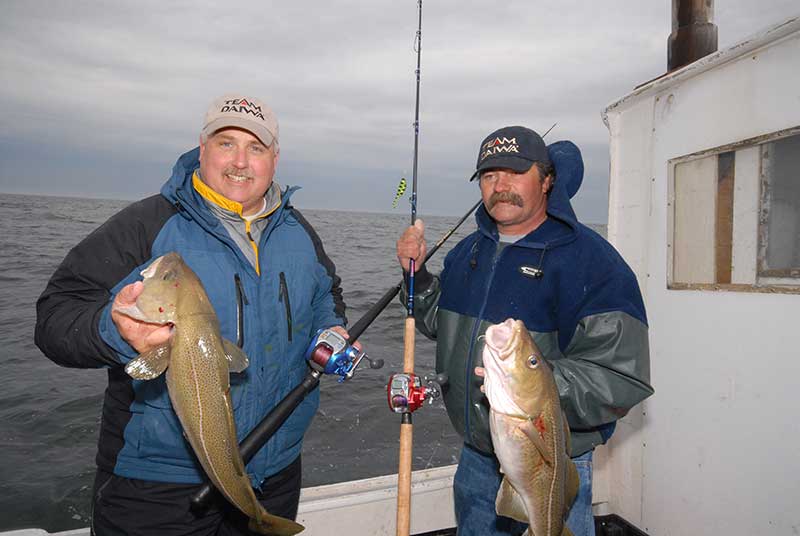
caputi cod
Anglers and party- and charterboat operators had been bracing themselves for what was shaping up to be a death blow to their primary spring and summer fishery in 2013, but got a reprieve thanks to the work of the Recreational Advisory Panel (RAP) to the New England Fishery Management Council (NEFMC).
Cod and haddock in the Gulf of Maine were thought to be experiencing a strong rebound in recent years, but a new assessment done in 2011 indicated just the opposite. It suggested that populations were significantly smaller than anticipated and under this current wording in the Magnuson Stevens Act the statutory definition of overfishing kicks in. That results in Accountability Measures in the form of an immediate reduction in harvest levels for commercial and recreational sectors–a reduction that could last for years should a newly commissioned emergency reassessment (yet to be undertaken) not offset the earlier one.
Anglers and folks in the party- and charterboat industry feared the loss of this critically important fishery for 2013 as drastic reductions estimated at 75 to 80 percent were being contemplated for the commercial groundfish fleet. Fortunately the RAP, chaired by former long-time Salt Water Sportsman editor and RFA New England Regional Director Barry Gibson, reviewed all the available landings data for the prior year and managed to find some light at the end of what could have been a very dark tunnel.
In a meeting with National Marine Fisheries Service (NMFS) officials, including Acting Assistant Administrator Sam Rauch, the RAP discussed an interim plan that might be put into place until a full rebuilding amendment could be developed.
“We made our case for a minimal 22 percent reduction for 2013 so recreational measures were only tightened modestly,” Gibson told me, “but we were warned that the across the board cuts to follow indicated we’d have to bite the bullet in 2013.”
The reasoning behind the smaller reduction for anglers came about because the sector hadn’t caught anywhere near the number of cod and haddock in 2012 that they did in 2011. The lower landings were probably the result of the large sector draggers purchasing inshore quota and working popular recreational fishing areas such as Stellwagen Bank through the winter of 2010/2011, which dramatically reduced recreational landings later in the season.
“If our catch was already way down, did we really need further restriction in order to stay under our allocation?” Gibson asked the other members of the RAP.
So they petitioned NMFS and the NEFMC staffers to analyze all the information they could find on recreational landings in 2012 in order to establish a trend for determining if immediate draconian cuts would actually have any conservation benefit. As a result NMFS bio-economists ran numerous models and came to the conclusion that given the projected size of the cod stock and the predicted level of recreational fishing effort, that a nine cod per person limit with a 19-inch minimum could be maintained for 2013, with an 82 percent certainty that the recreational allocation of 486 metric tons would not be exceeded.
The haddock numbers provided a less rosy outcome, but with a bump up in size limit from 19 to 21 inches, they determined that the season could proceed with no-bag limit with a 63-percent certainty the quota would not be exceeded.
Hats off to Gibson, Patrick Parquette and the members of the RAP for taking a hard look at the data and putting the pressure on NMFS to do the same.









